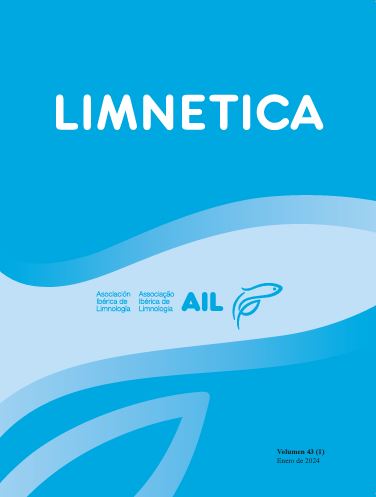Longitudinal patterns in water quality and fish assemblage structure in a low-gradient, temperate Neotropical stream disrupted by a point-source urban effluent
Resumen
Low-gradient, prairie streams from the Pampa Plain, Argentina, constitute the southernmost geographic occurrence for many Neotropical fish species. Fish assemblages in Neotropical streams have shown drastic responses to the modification of habitat and water quality. Under this scenario it could be hypothesized that the water quality will be influenced by the anthropic activities and the natural conditions and that the ichthyofauna will be responsive. Therefore, understanding the functioning of these ecosystems is crucial for their conservation in a world with ever-growing anthropic pressures. In order to explore patterns in fish assemblage and water quality under urbanization pressure, the Del Azul stream (Buenos Aires, Argentina) was sampled. The objectives of the study were: (1) to explore trends in water quality and fish assemblage structure along the stream, (2) to study the relationship between fish assemblage structure and water quality, and (3) to pinpoint individual species with potential for biomonitoring. Seven sites were selected along the stream, and they were sampled twice during each of five consecutive summer periods. Through the use of multivariate analysis, we revealed trends in water quality and fish assemblage structure where water quality characteristics were more distinctive of a basin sector than the fish species abundances. Irrespective of that, the Indicator Species Analysis evidenced some key species indicative of given groups of sites sharing similar water quality characteristics. Namely, Cnesterodon decemmaculatus was associated to polluted reaches downstream from the point-source urban effluent, and Cheirodon interruptus, Pimelodella laticeps and Oligosarcus jenynsii to lower salinities and less polluted reaches upstream from the point-source urban effluent. All these species could be useful for biomonitoring temperate Neotropical streams.
Descargas
Publicado
Número
Sección
Licencia
Los autores que publican en esta revista están de acuerdo con los siguientes términos:
- Limnetica está bajo una licencia de Creative Commons Atribución-NoComercial 4.0 Internacional.
b. Los autores pueden establecer por separado acuerdos adicionales para la distribución no exclusiva de la versión de la obra publicada en la revista (por ejemplo, situarlo en un repositorio institucional o publicarlo en un libro), con un reconocimiento de su publicación inicial en esta revista.
c. Se permite y se anima a los autores a difundir sus trabajos electrónicamente (por ejemplo, en repositorios institucionales o en su propio sitio web) antes y durante el proceso de envío, ya que puede dar lugar a intercambios productivos, así como a una citación más temprana y mayor de los trabajos publicados (Véase The Effect of Open Access) (en inglés).


